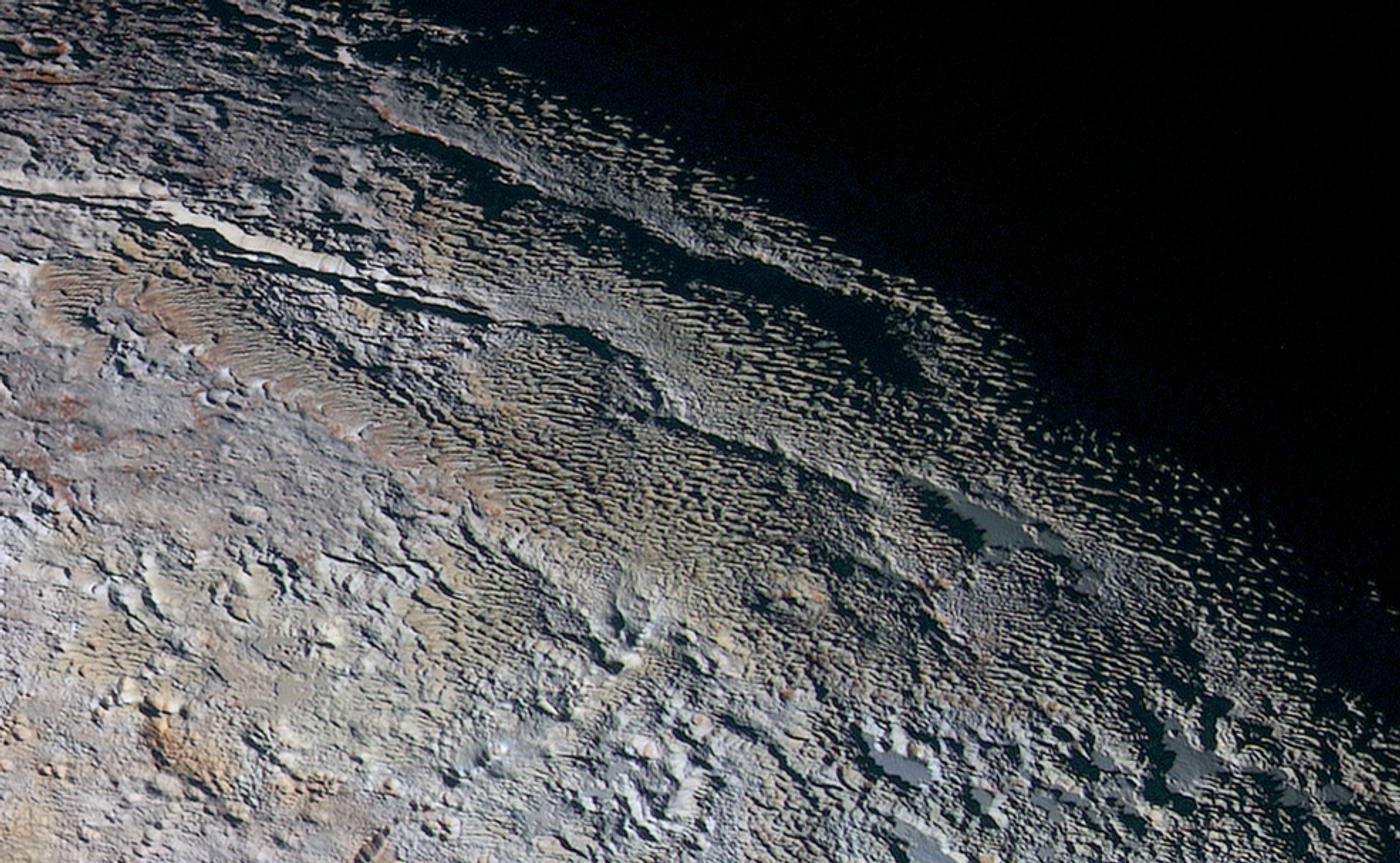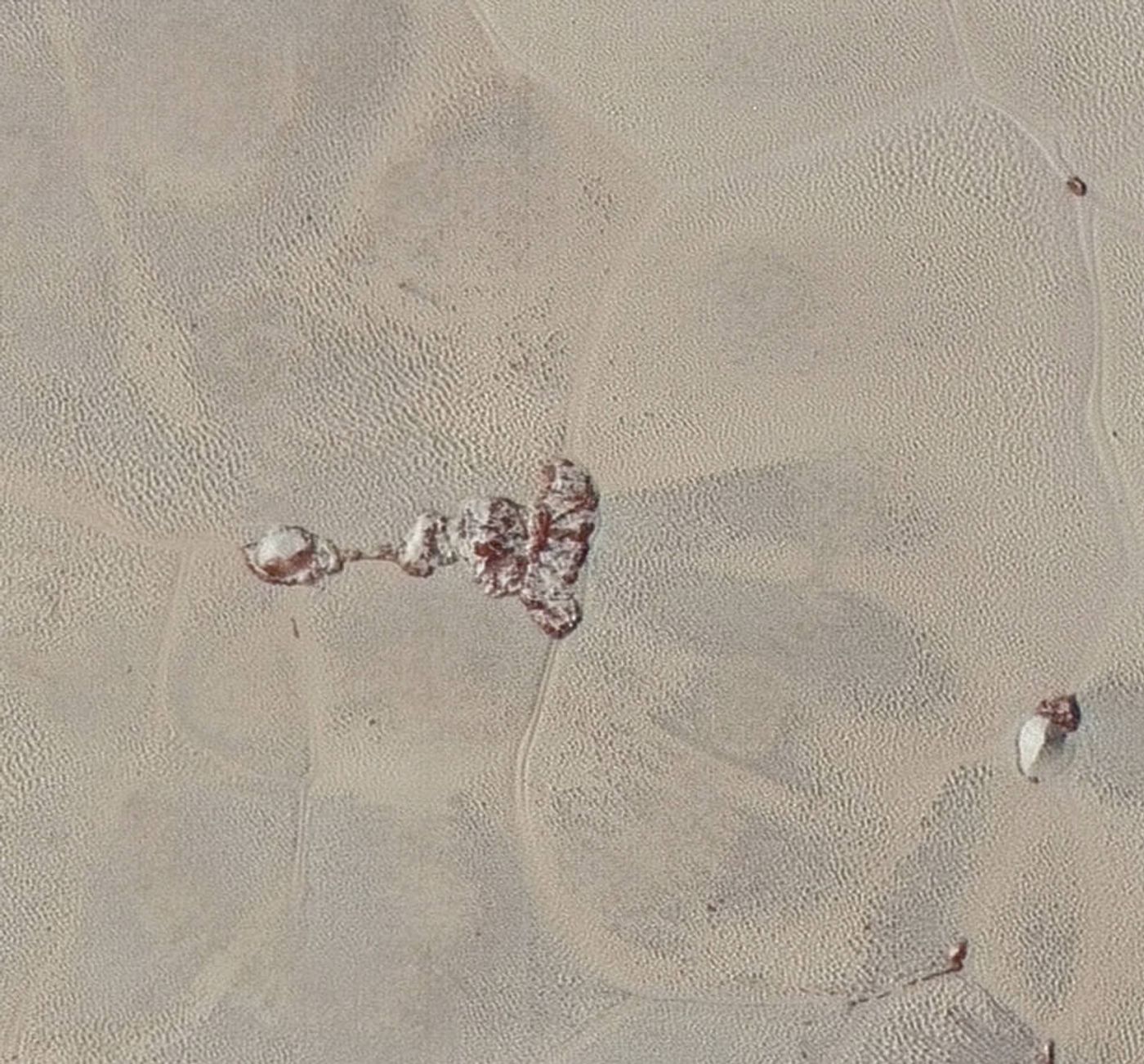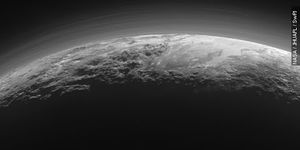New Horizons Sends Back More Incredible Pluto Images
In July, NASA’s New Horizons spacecraft flew past Pluto, and scientists grasped at the opportunity to take some high resolution close-up shots of the dwarf planet before the probe flew off into interstellar space.
Slowly, the probe has been downlinking photographs that it took of the dwarf planet to scientists back on Earth, which you can imagine is a slow process being that the radio waves from the probe have to travel over 3 billion miles to get back here.
This Thursday, even more photographs were shared by NASA. These photographs, which are in full color, demonstrate the interestingly ‘scaly’ and ‘bumpy’ surface of Pluto. A lot of the detail that was seen was unexpected by the New Horizons team, as NASA noted in a public statement.
In one of the photos, the probe captured the transition from day to night; you can clearly see the line separating the light side of the dwarf planet, illuminated by the Sun, from the dark side, which faces away from the Sun. The geological features of this location on the dwarf planet are interesting because it shows a rough terrain up close, including some ridges:

“It’s a unique and perplexing landscape stretching over hundreds of miles,” said William McKinnon, New Horizons Geology, Geophysics and Imaging (GGI) team deputy lead from Washington University in St. Louis. “It looks more like tree bark or dragon scales than geology. This’ll really take time to figure out; maybe it’s some combination of internal tectonic forces and ice sublimation driven by Pluto’s faint sunlight.”
Below, an image taken with New Horizons’ wide-angle Multispectral Visual Imaging Camera (MVIC) shows off a very wide view of the dwarf planet in high detail:

Another image taken by New Horizons’ narrow-angle Long Range Reconnaissance Imager (LORRI) shows in detail the ‘scaly’ regions of the planet, which scientists believe are the result of “volatile ice” formations:

The final image released in the statement shows more of the ‘scaly’ surface, although this version shows the strange formations in the middle of a very smooth plain:

The years of formation effects on Pluto’s tantalizing surface have been very intriguing to see up close and learn about thus far, although New Horizons isn’t done downlinking data just yet. Currently, the spacecraft is headed into interstellar space, but before it gets there, NASA would like to get a closer look at a KBO (Kuiper Belt Object) known as 2014 MU69, which is about 1 billion miles further than Pluto.
Since the probe took a lot of images during its fly-by, you can expect to see a lot more of the dwarf planet in coming weeks.
Source: NASA








